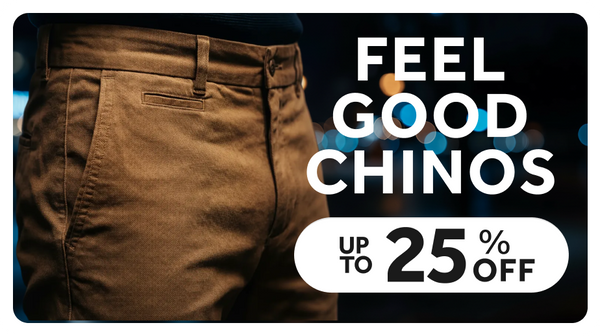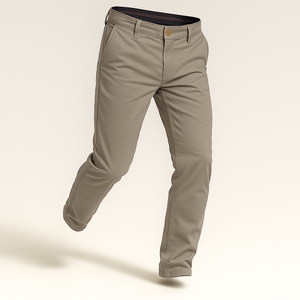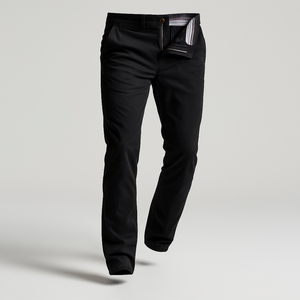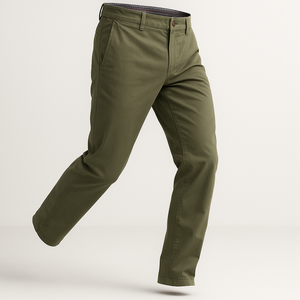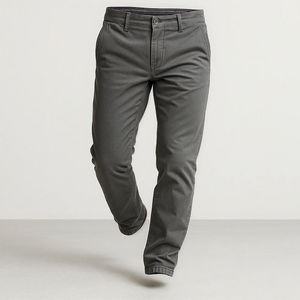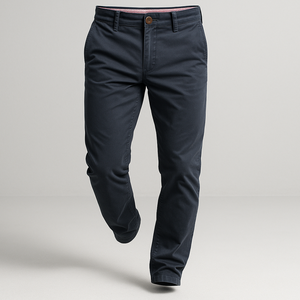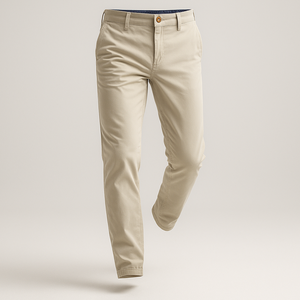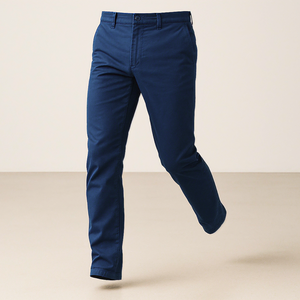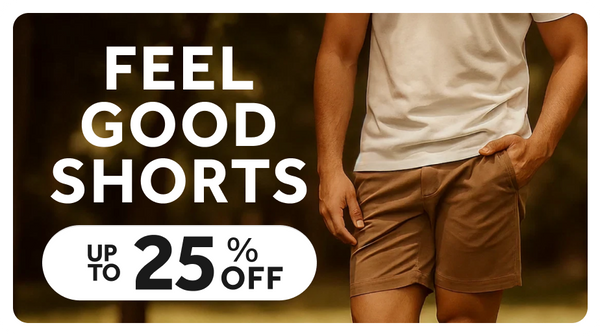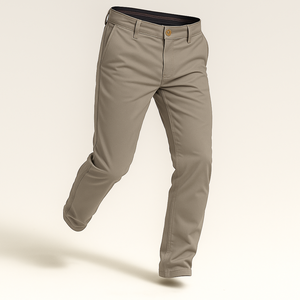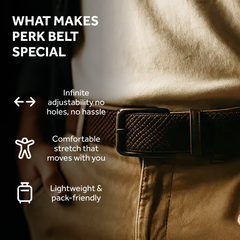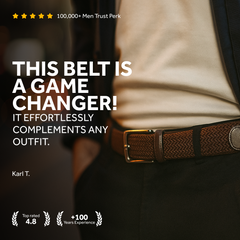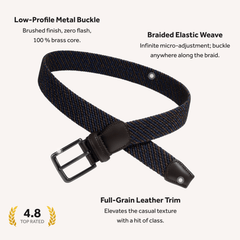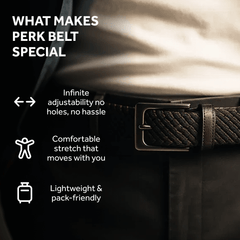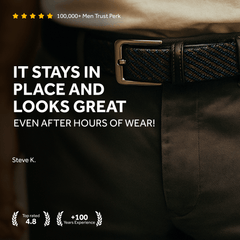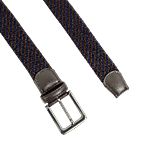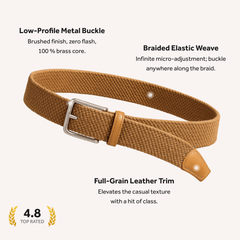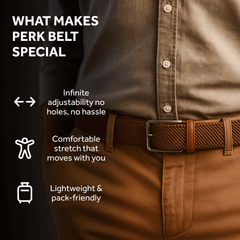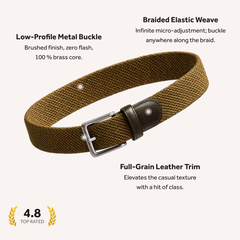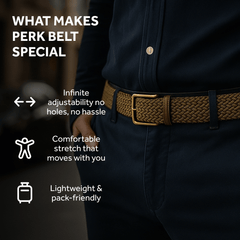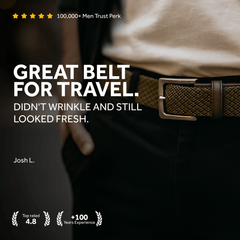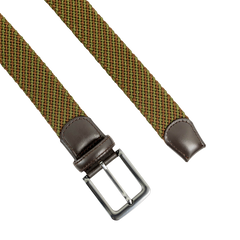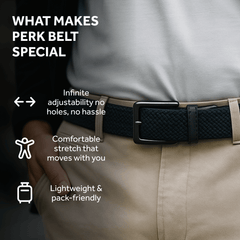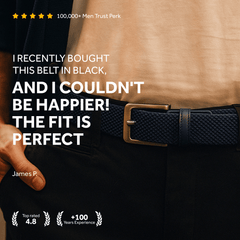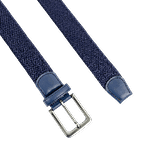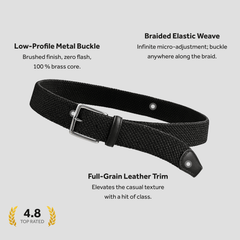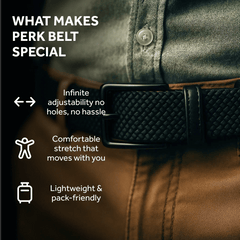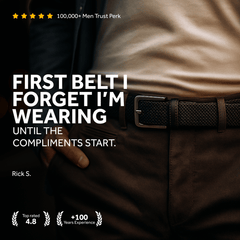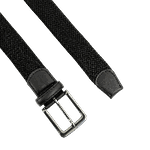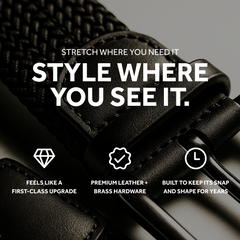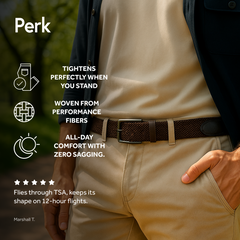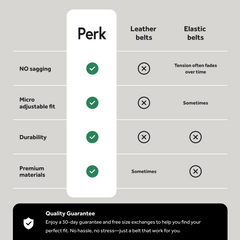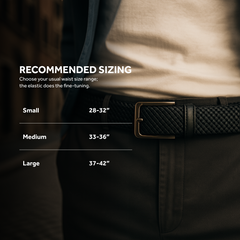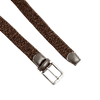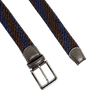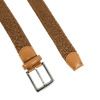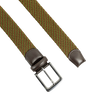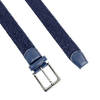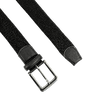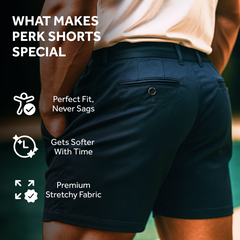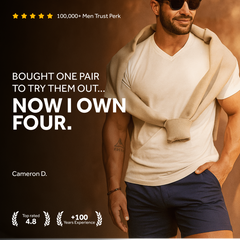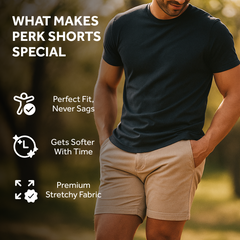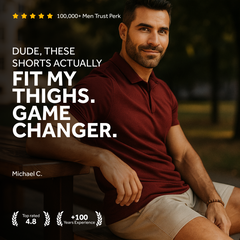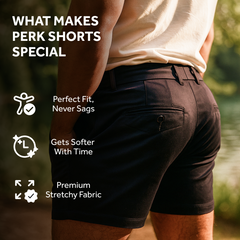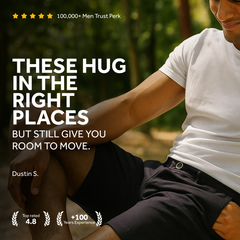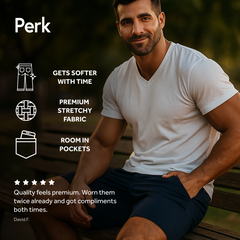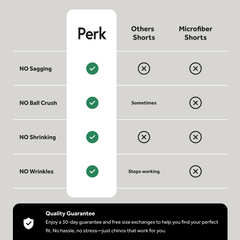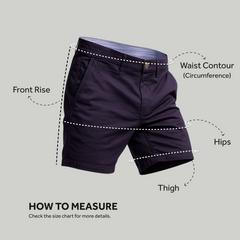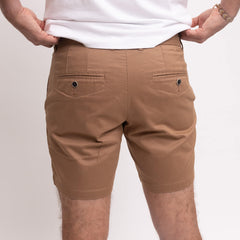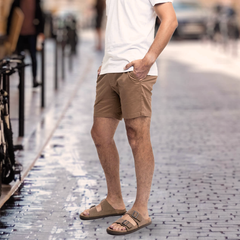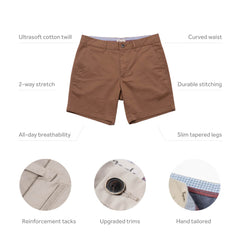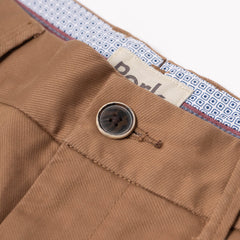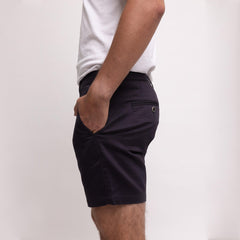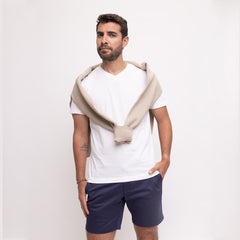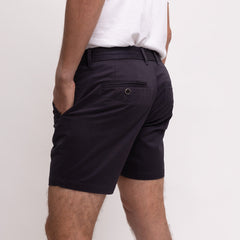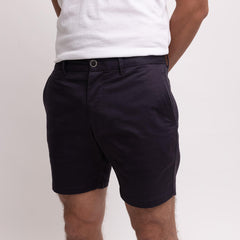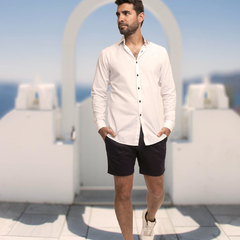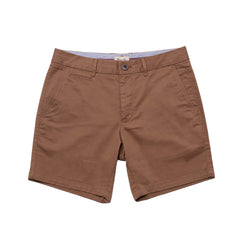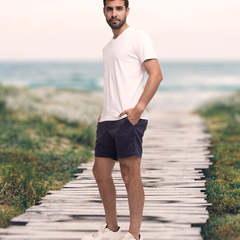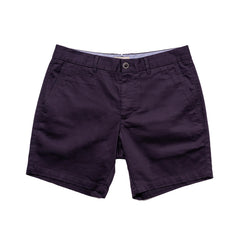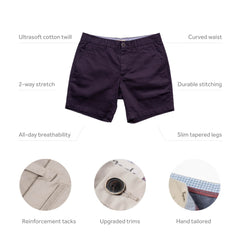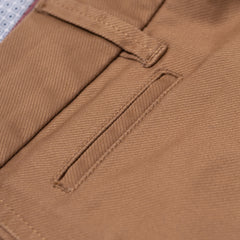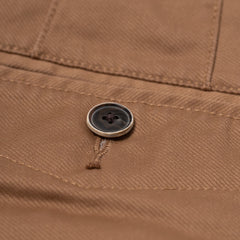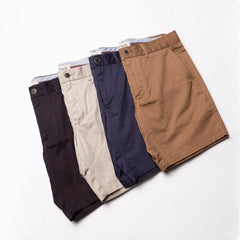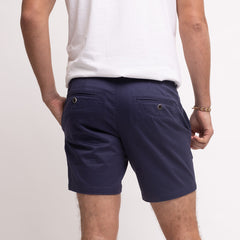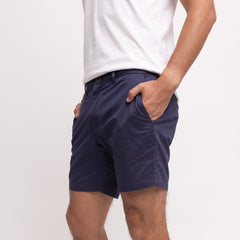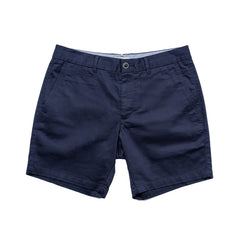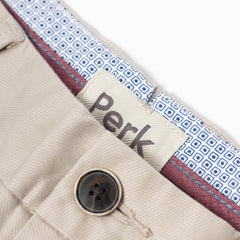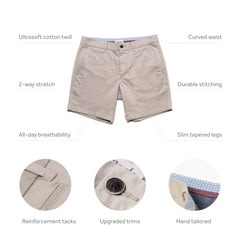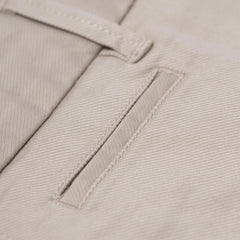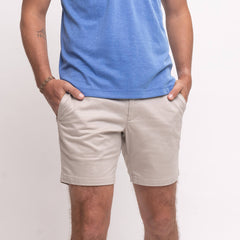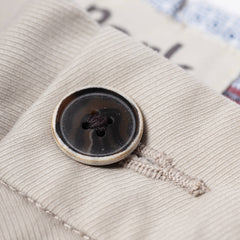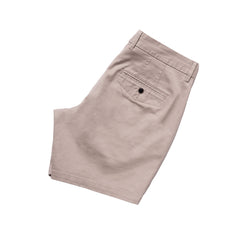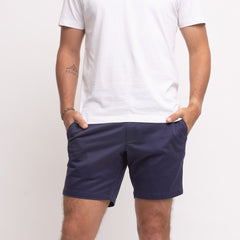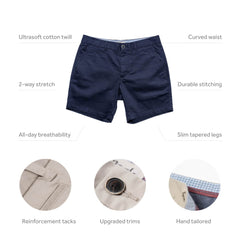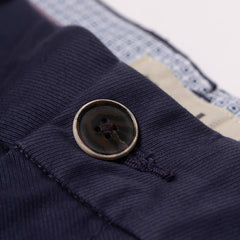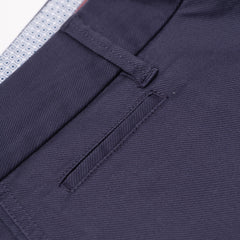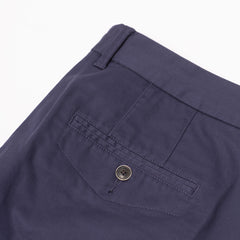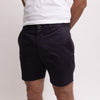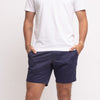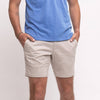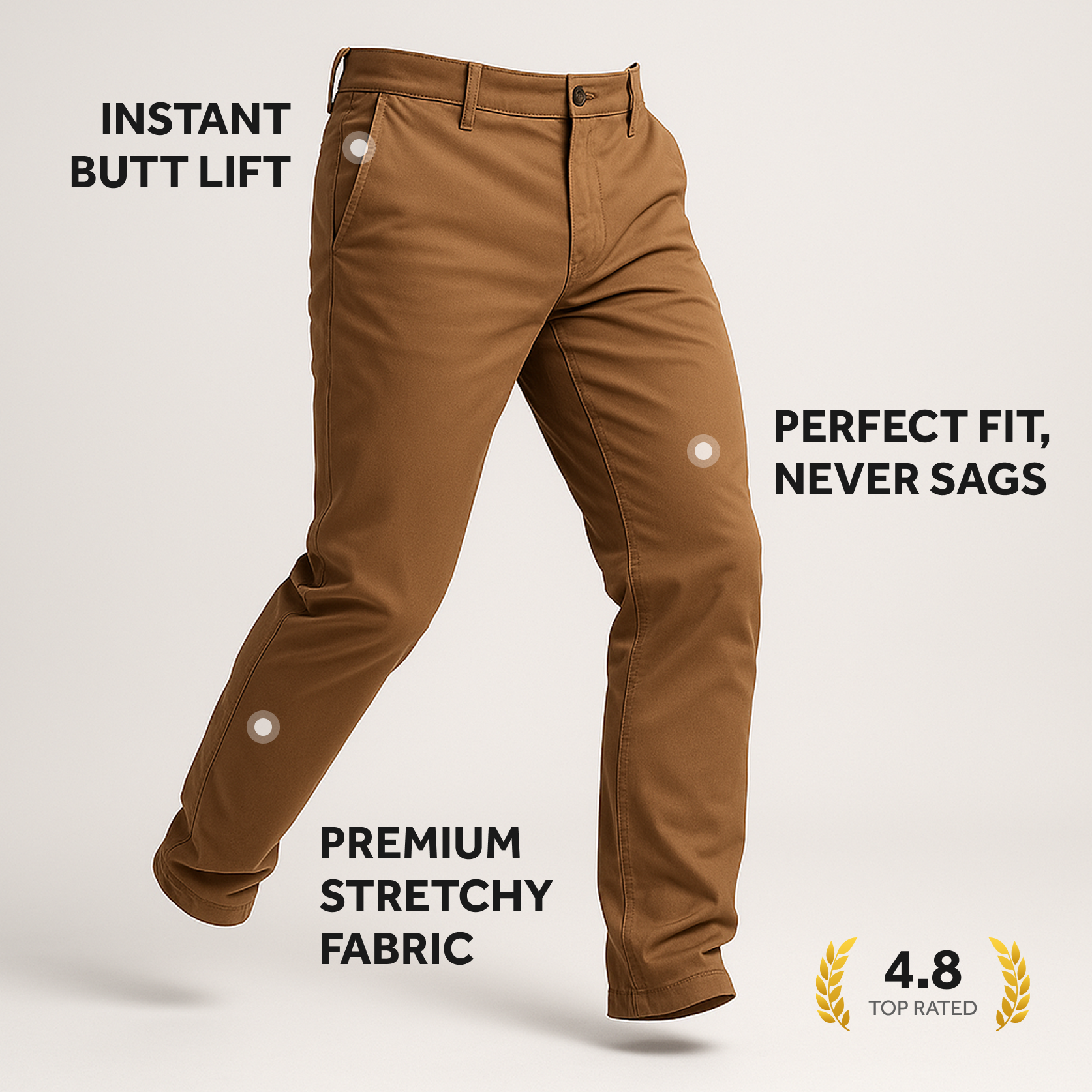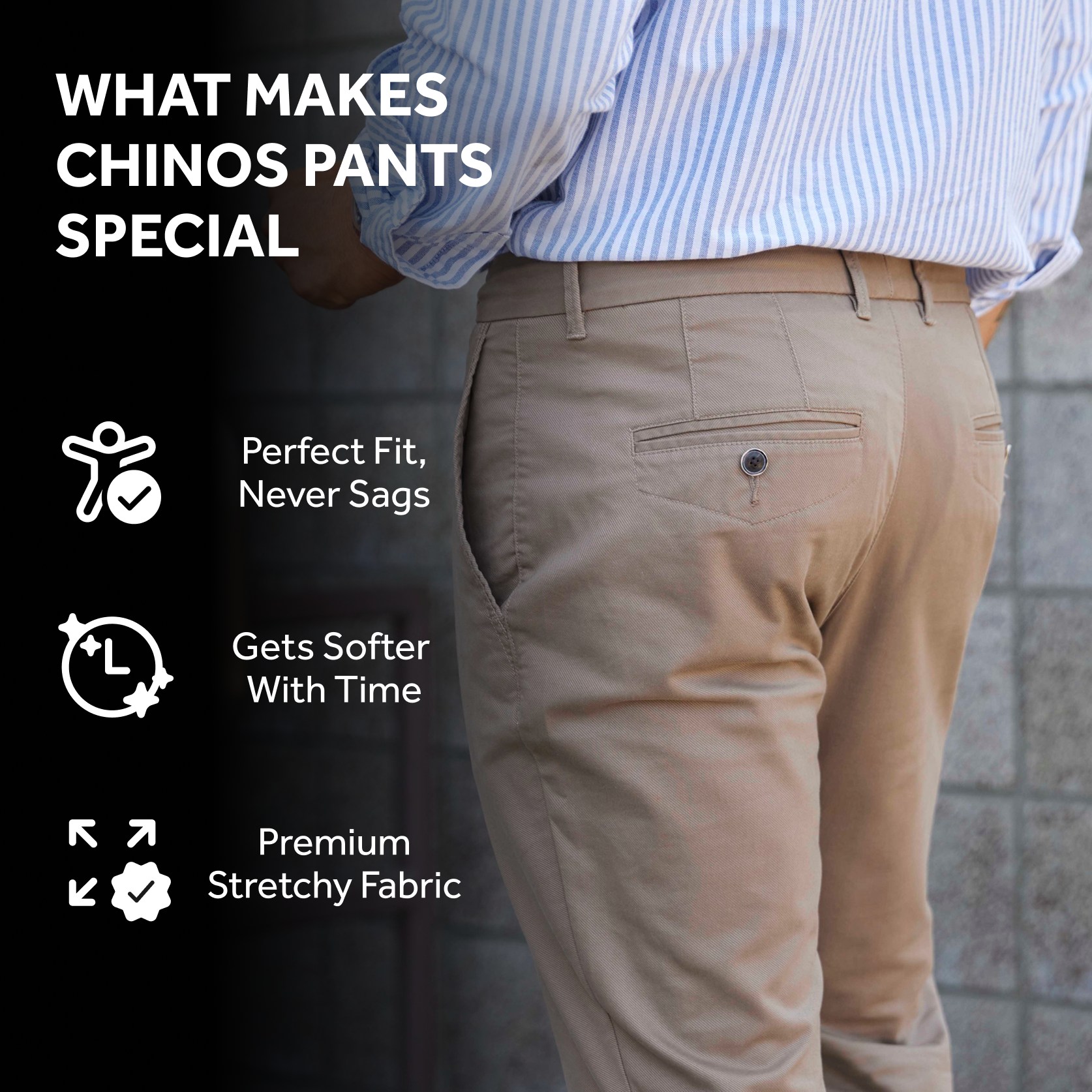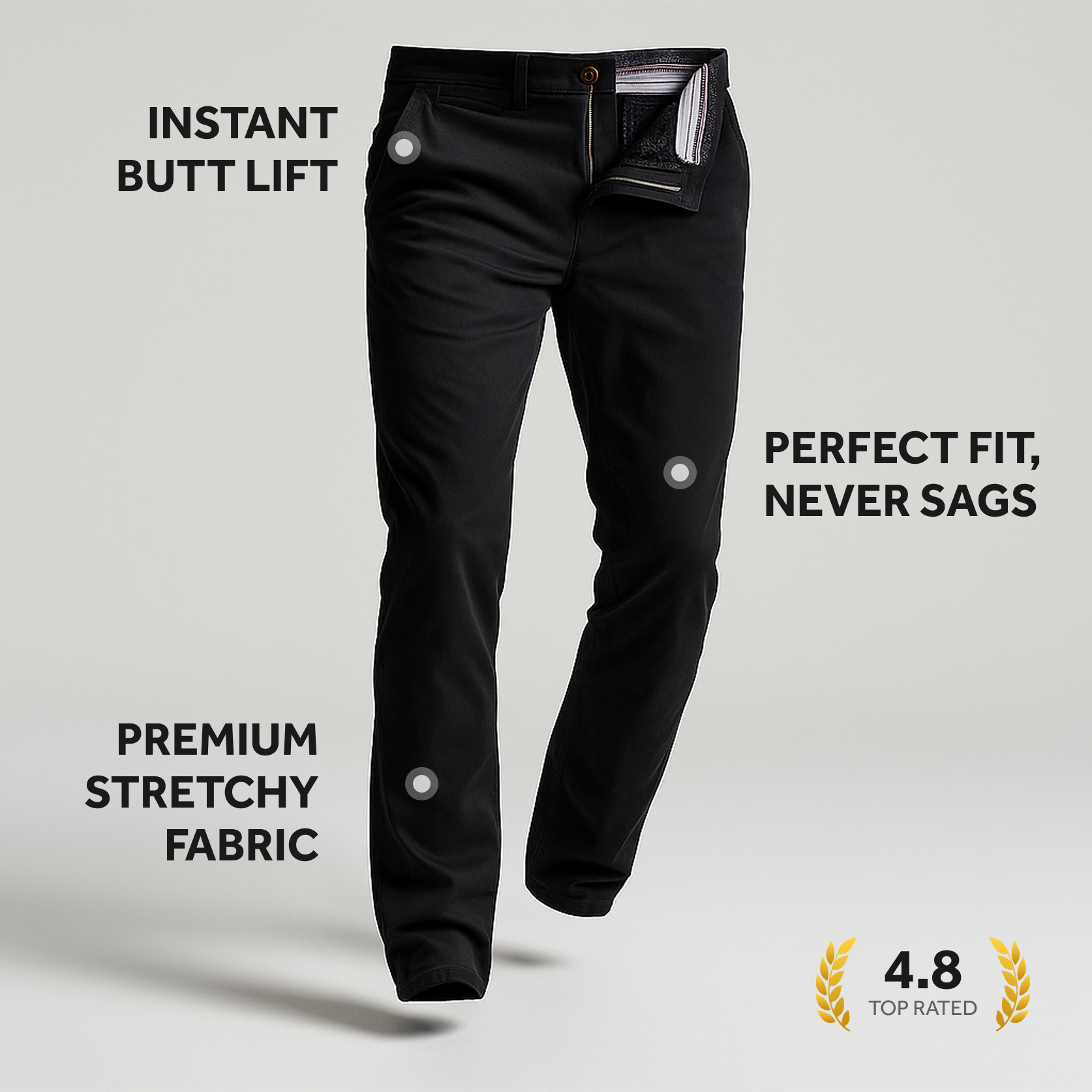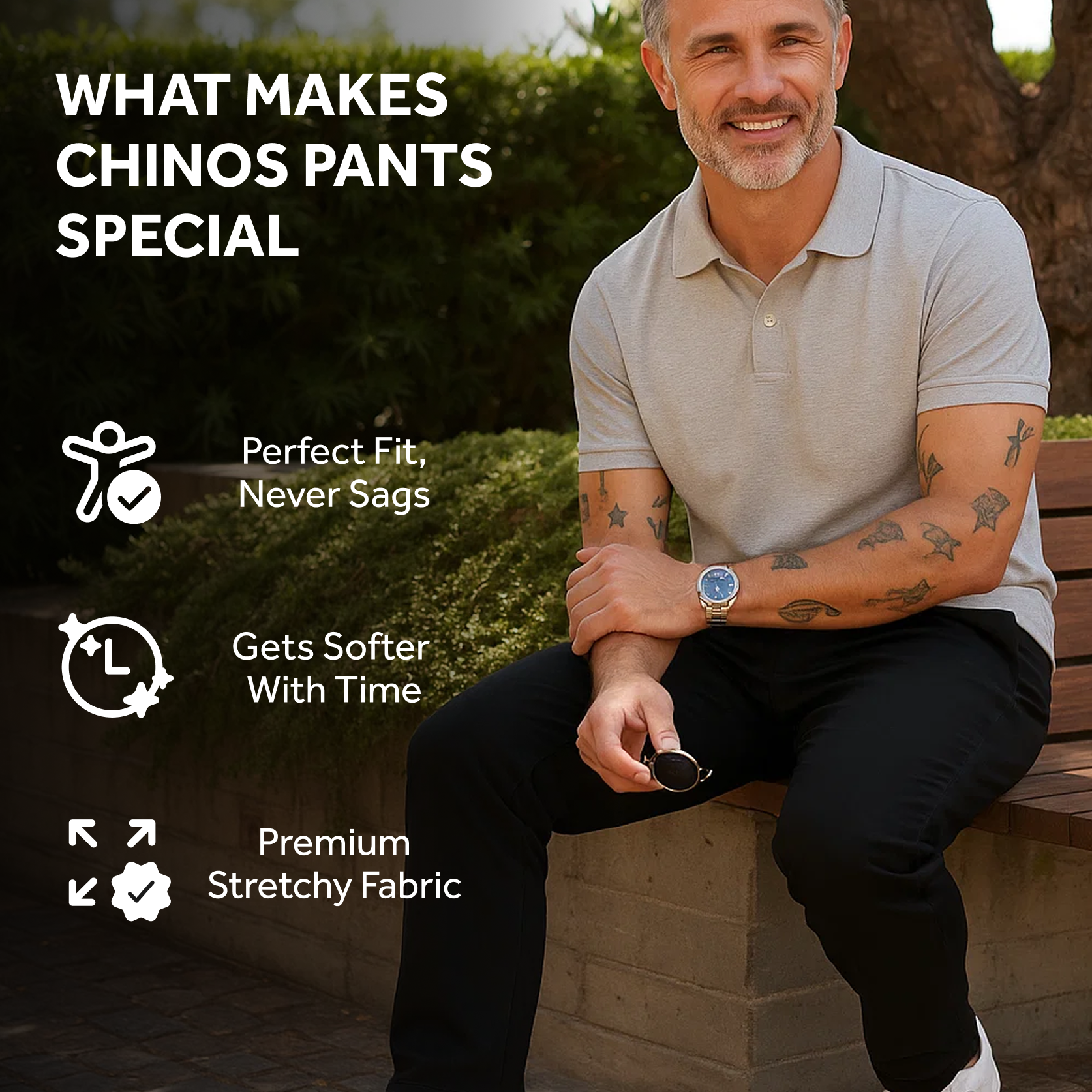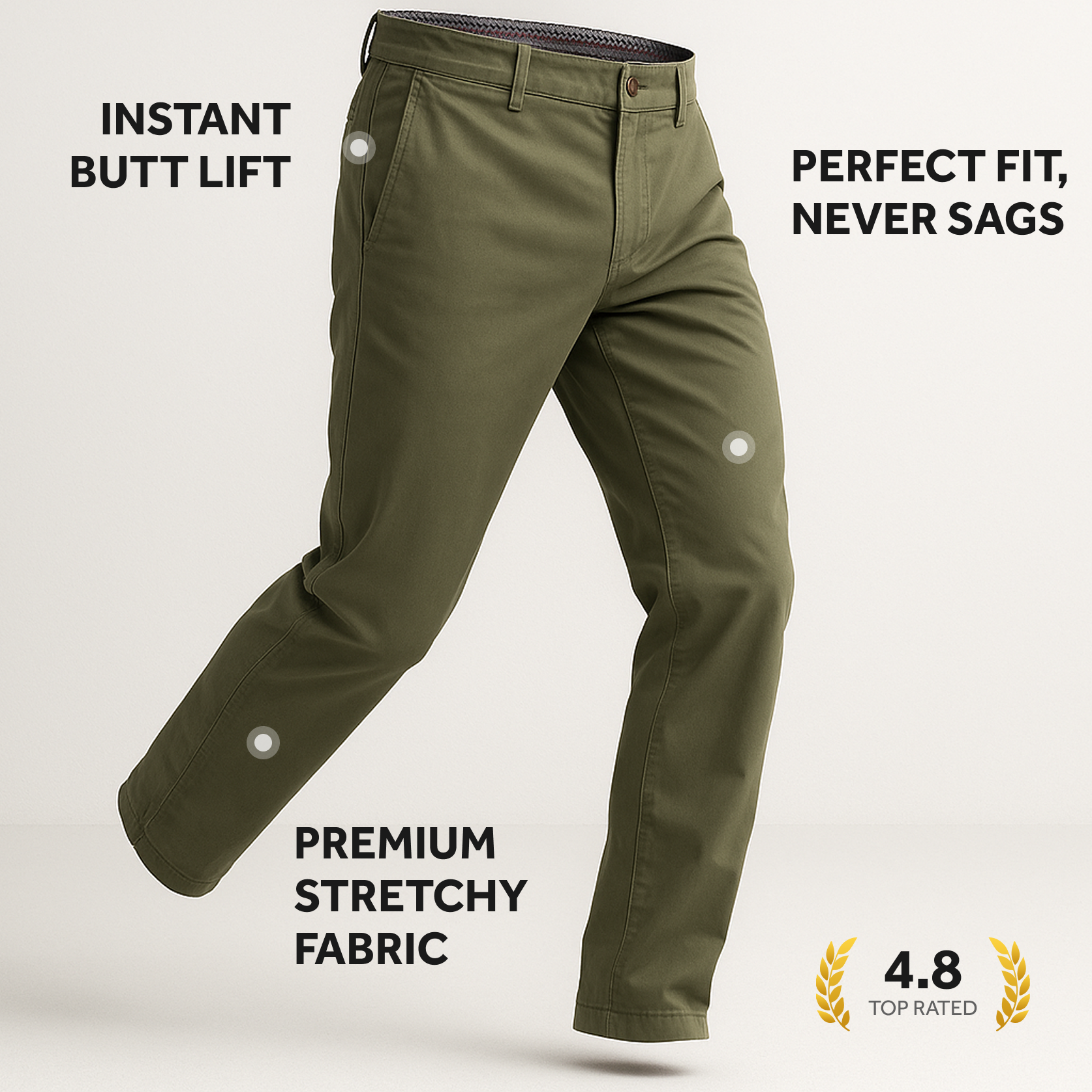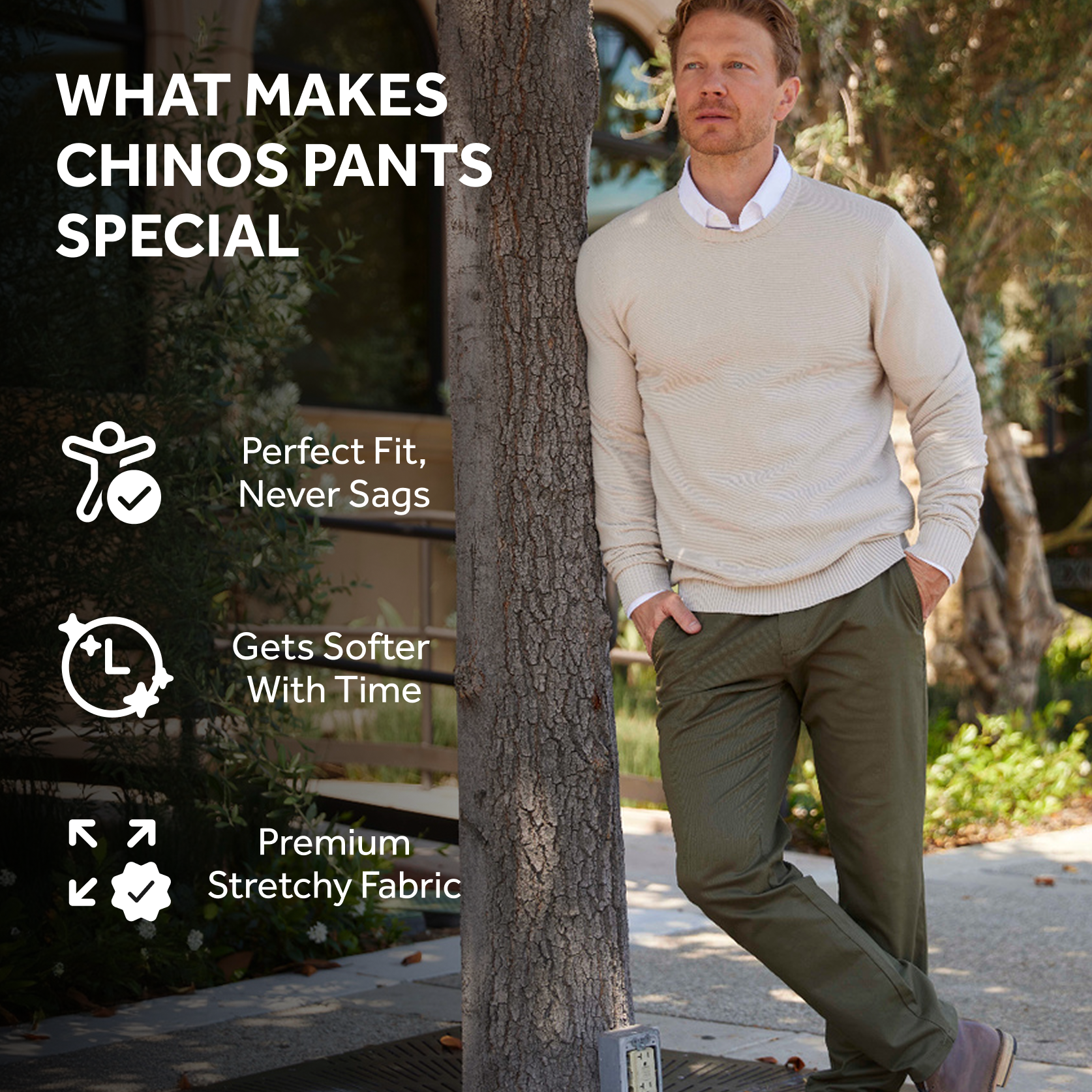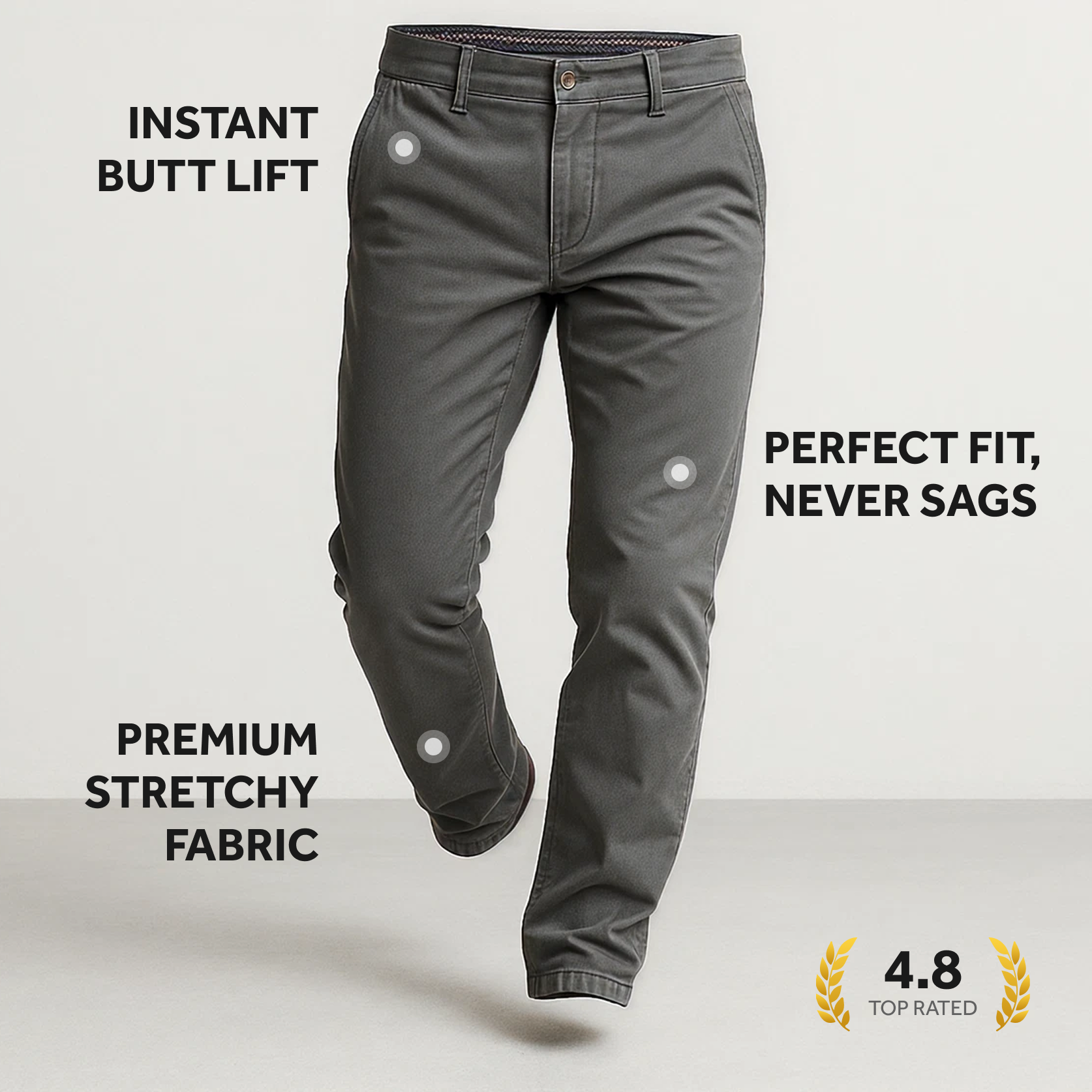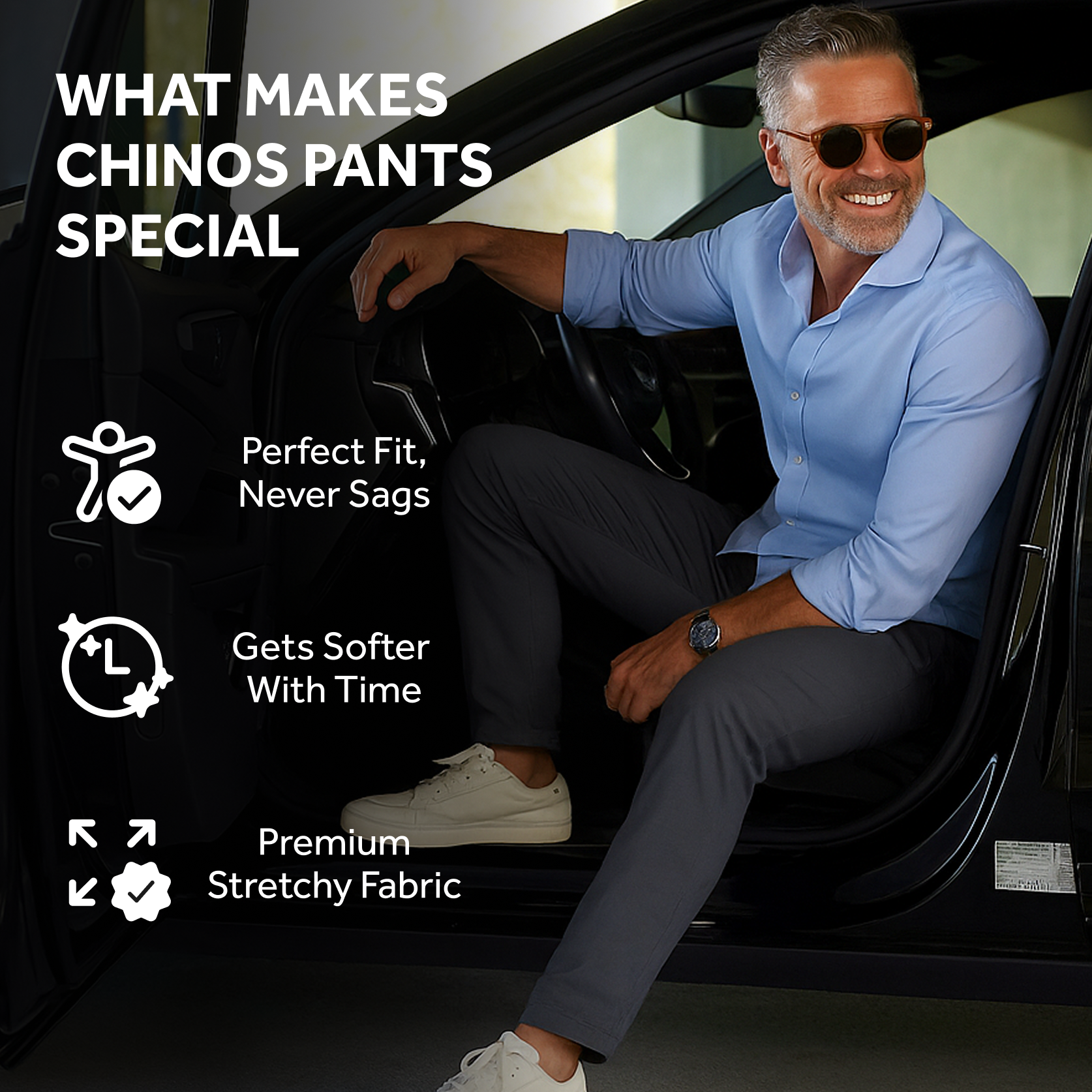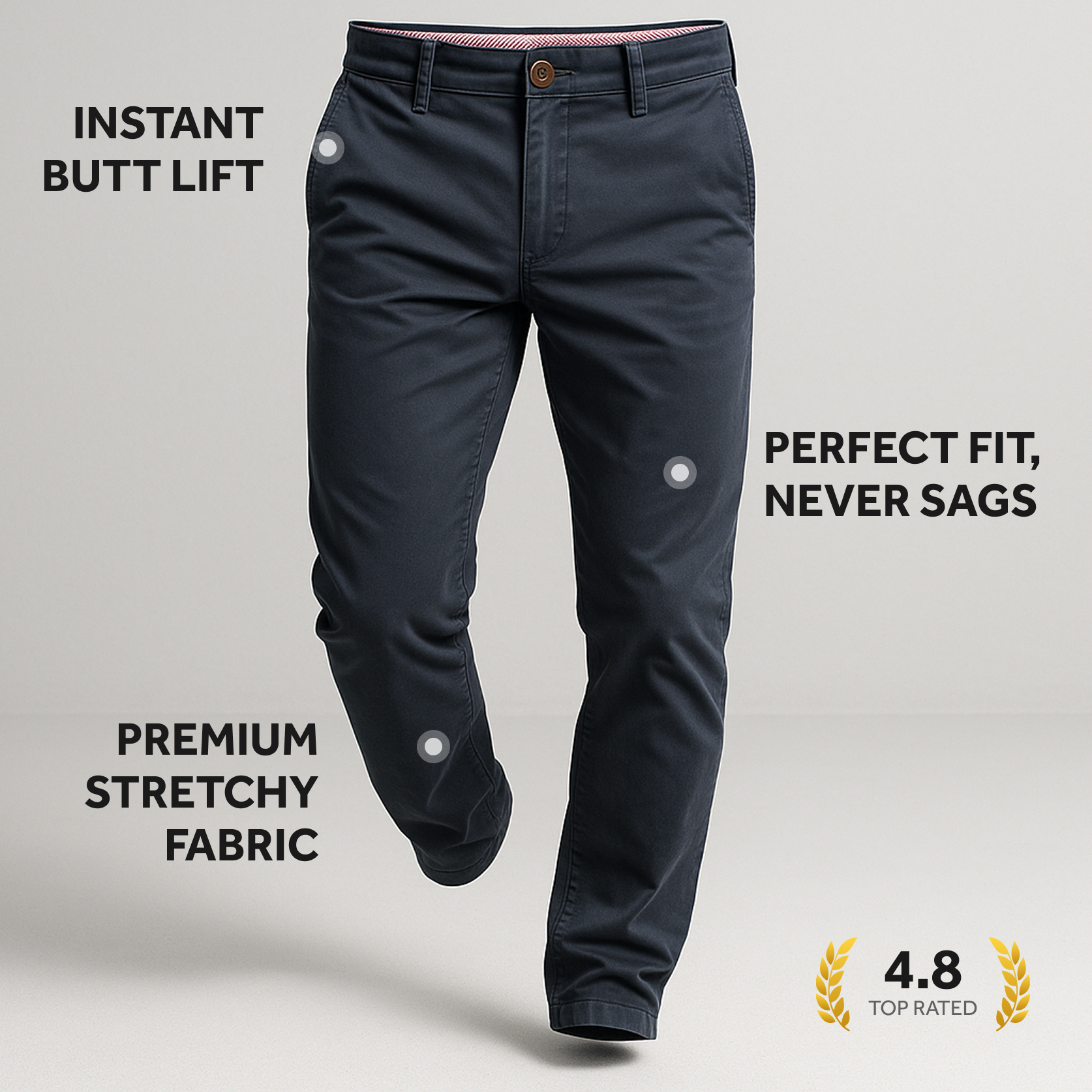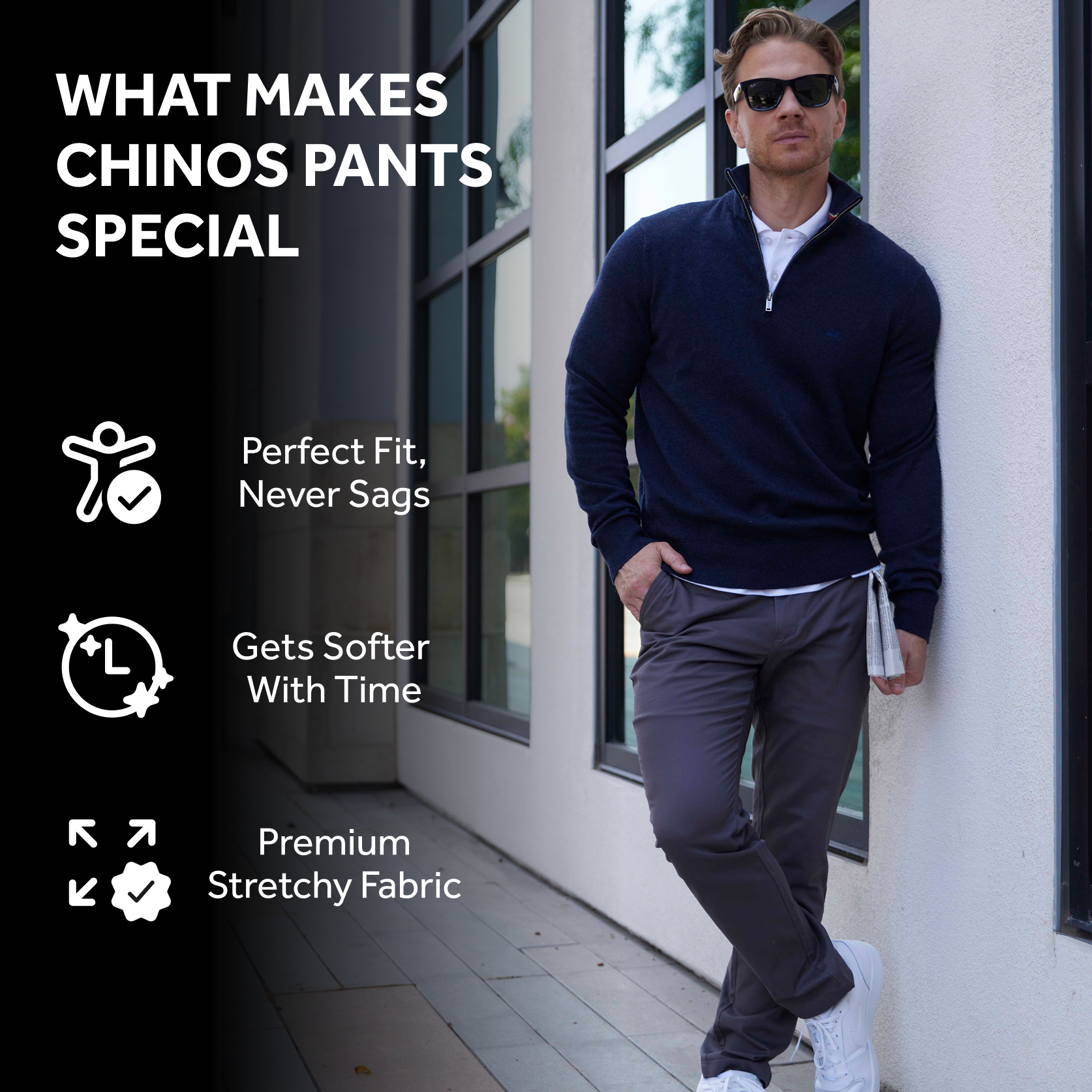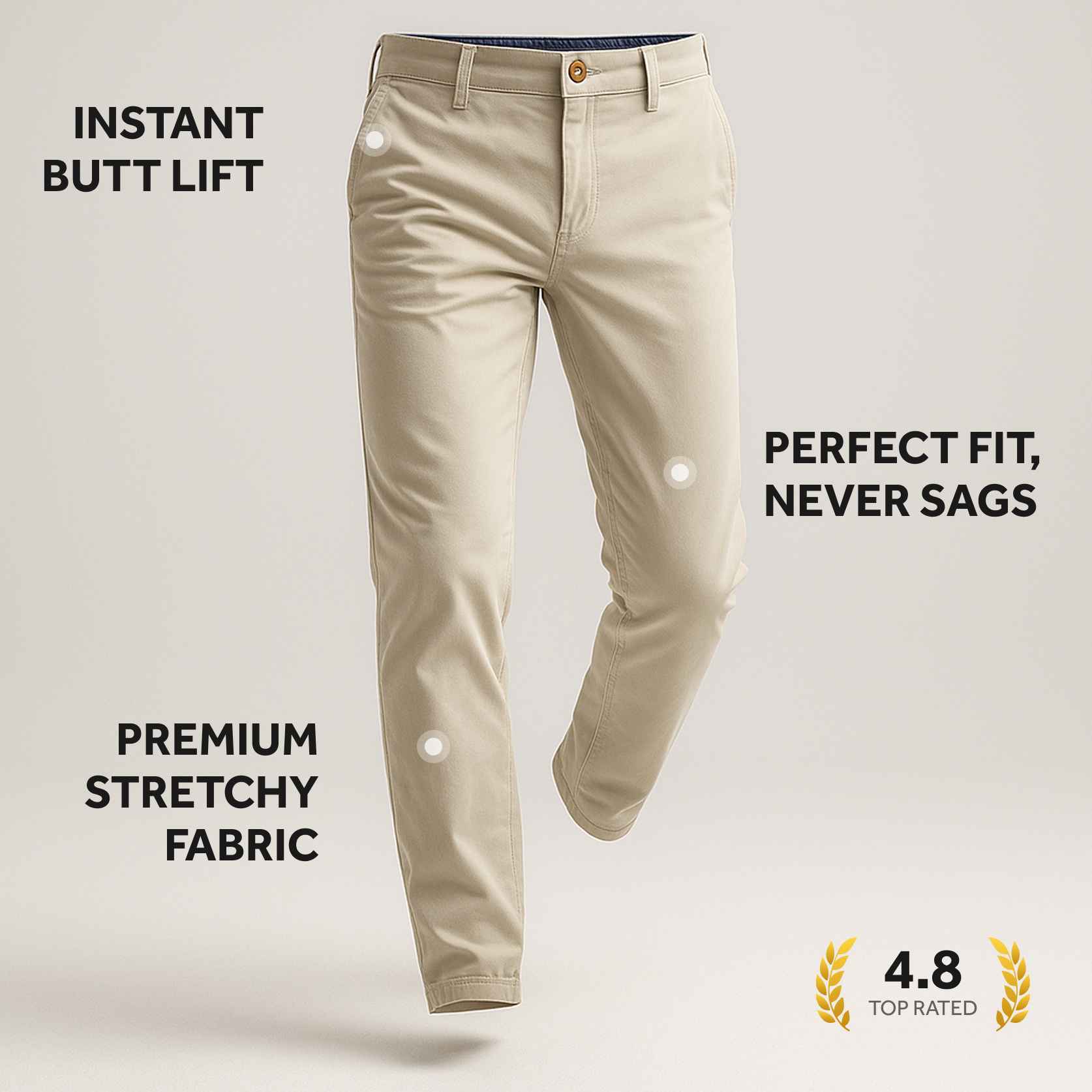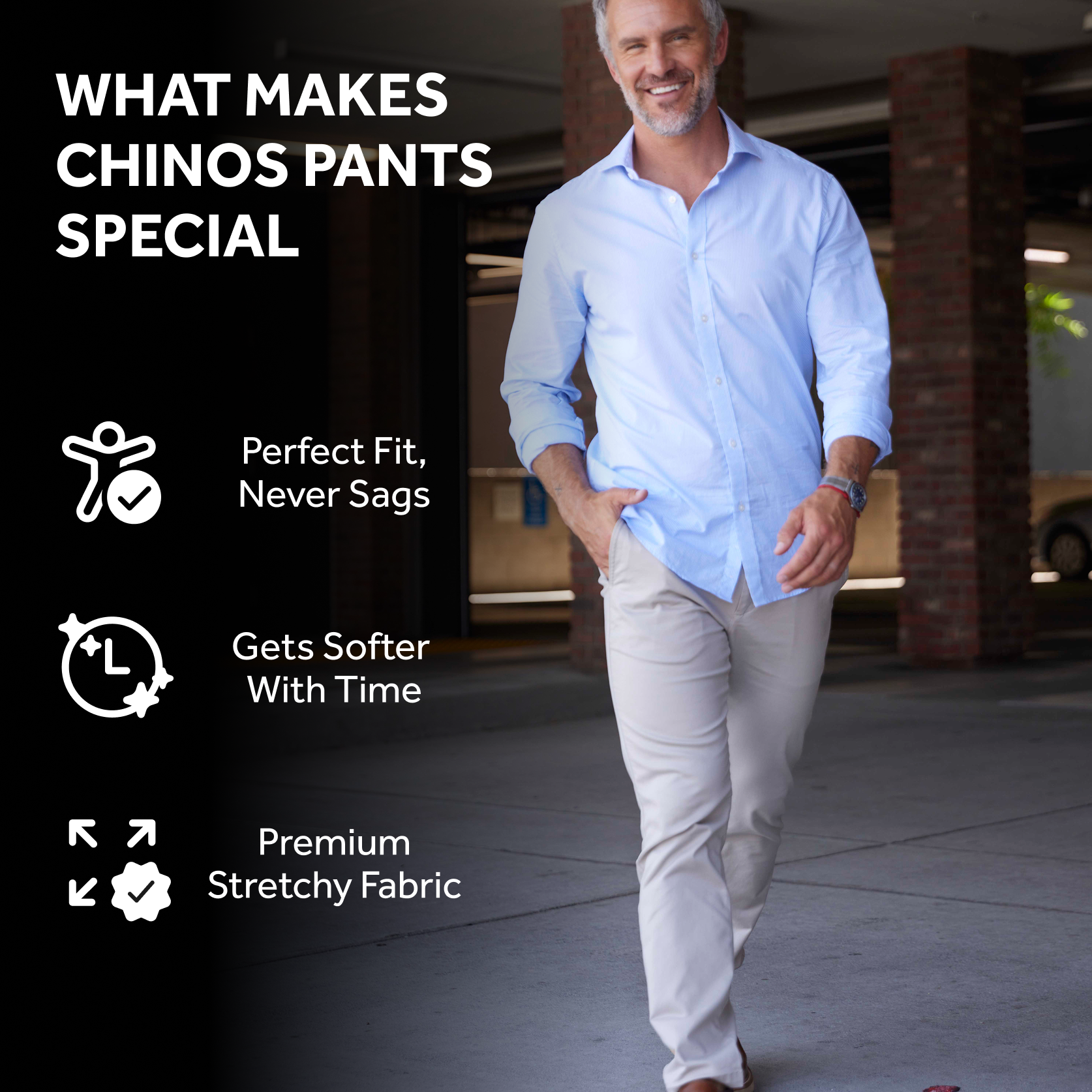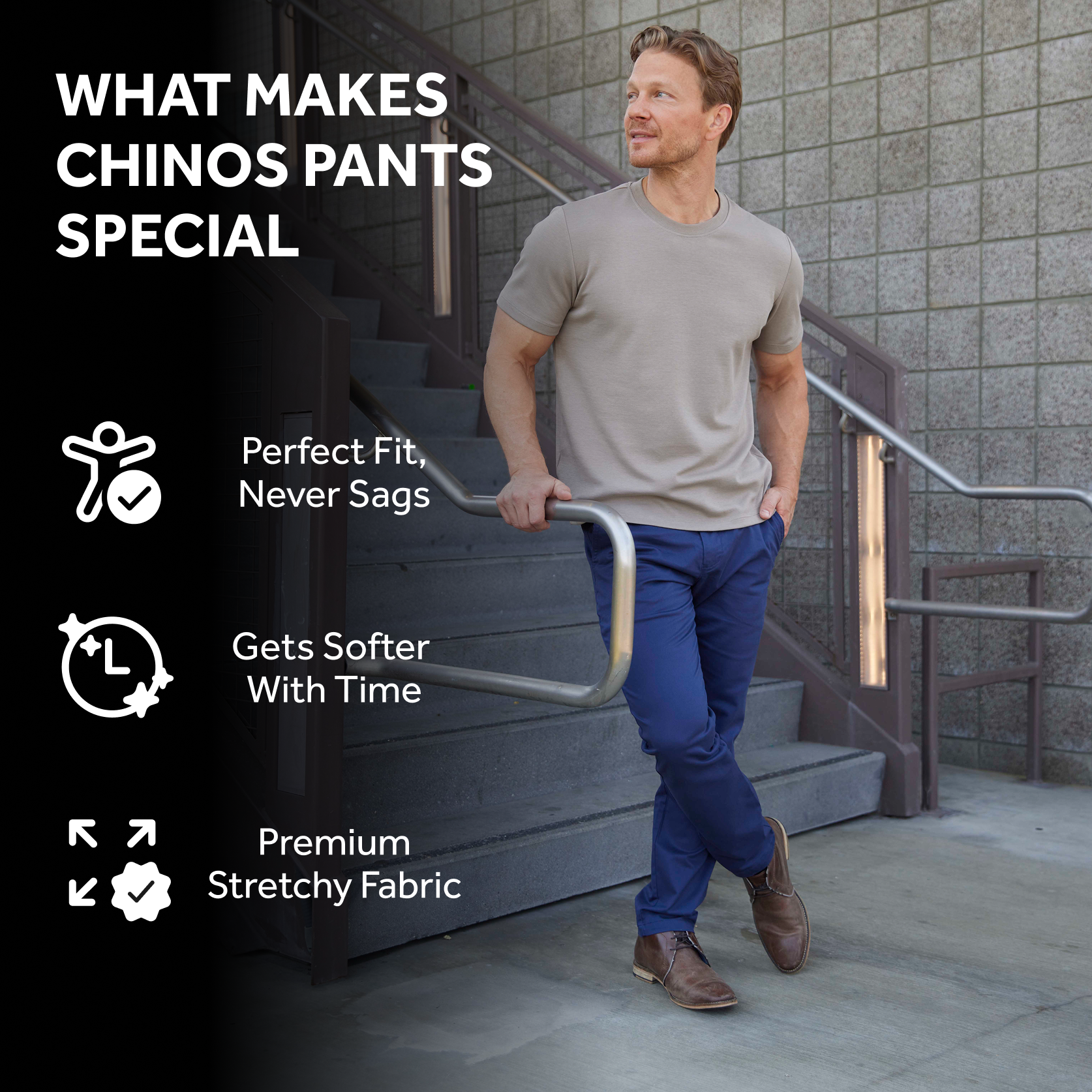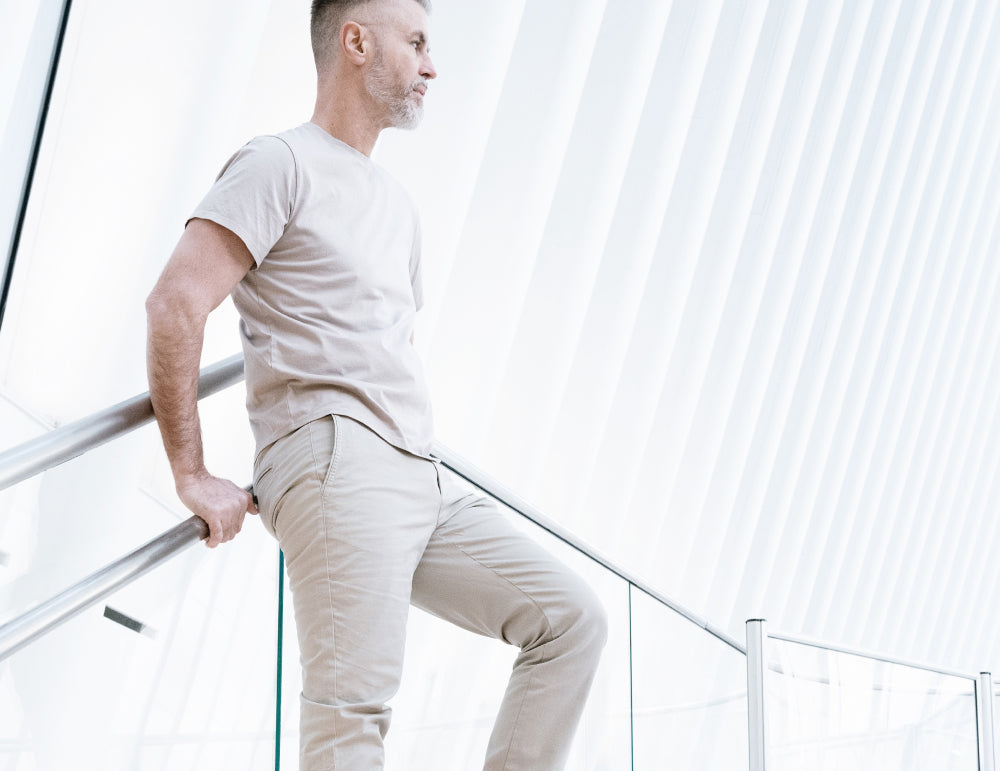Belts are a necessary accessory not only for functionality, but for aesthetics too. They have the power to transform your outfit and bring your look together in a classy and professional way - this is relevant to casual belts for men and formal ones, too.
If you’ve been curious as to how to make belts for men work for you and your chinos, you’ve come to the right place. As usual, Perk has the advice you’ve been searching for.
What Belt To Wear With Chinos?
Selecting the right belt can have a big impact when you wear them with your chinos. For formal occasions, stick with dress belts made of leather that feature a sleek and thinner strap with a polished buckle.
These belts should ideally match your shoes and be in neutral tones like black, tan, or dark brown. This pairing will help you maintain a classy and cohesive look that you can wear practically anywhere.
For casual outfits, you have more flexibility. Casual belts for men often feature wider straps and can be made from materials like canvas, suede, or cotton.
These belts may come with a more rugged finish and larger, brushed metal buckles. If you want a laid-back vibe, then they're a good option to consider.
The key is to match your belt choice with the formality of your outfit while paying attention to color coordination and material quality. By following all of the above tips, you should end up with a look you can be proud of!

Dress Belts
Men’s dress belts are made of leather and consist of a thinner strap. They often have a sleek, square buckle with a shiny finish, and the stitching is typically the same color as the leather. These belts are great to wear with your chinos for almost any formal occasion.
While it’s true that formal belts come in a wide array of colors, we recommend sticking with neutral shades like black, tan, or brown.
Casual Belts
There are more choices and fewer limitations when it comes to casual belts for men. Unlike formal belts that have a smaller buckle, the buckle on a casual belt might be a little bit bigger, as they are often made with a wider strap. And, instead of just leather, casual belts can be found in rope, suede, canvas, or cotton, which makes them quite versatile.
Casual belts can still be found in leather, but the leather used for casual belts is a different type than the kind used for formal choices. This leather is typically tougher, rugged, and more raw, with contrasted stitching instead of stitching of the same shade. Instead of a shiny buckle, the buckles on casual belts are usually unpolished, brushed metal.
Feel free to wear casual belts with chinos for the right occasions, but you can also wear them with jeans or shorts, too.
Matching Your Belt
Now that we’ve gone over chino belt styles, it’s time to learn how to match your belt to your outfit. If you struggle when figuring out what separates to put together and what belt should complete the look, remember this: match your metals together and your leathers to your belt. So, your belt buckle should be the same metal as your watch, cufflinks, or jewelry, and your belt strap should be the same color as your shoes.
Knowing tips and tricks like this is what helps you become the best-dressed guy in your group. It’s the fine details that really matter!
What color belt goes best with khakis?
If you’re wearing a t-shirt and tan chinos (AKA khakis) to a casual event, you might choose to wear a brown belt - this contrasts against the color of your pants, but you’re staying in the same color family to create a nice, streamlined look.

If you’re attending a formal event where a t-shirt would not be appropriate, but you can still find a way to make your chinos work, we do not recommend a contrasting belt. Instead, stick to a sleek and minimalistic look without many textures. If you’re wearing tan chinos in a formal setting, you might choose black belts or dark brown leather belts.
When to Wear a Belt
Here are some situations in which you should always wear a belt:
- When your pants have belt loops.
- When you’re wearing a shirt that’s tucked into your pants, whether it’s a t-shirt or a dress shirt.
- When you’re incorporating a jacket or blazer into your outfit.
- If you’re wearing an outfit that’s all one color.
Here are some situations in which you don’t have to (or shouldn’t) wear a belt:
- When you’re wearing a slim fit t-shirt. In some cases, a belt will make slim t-shirts bunch up in the back - no one wants that.
- When you’re wearing an untucked shirt. Unless your pants are chronically falling down, you can skip the belt.
Belt Sizes
Belt sizes are important for men’s dress belts and casual belts alike. What typically works is using your pants size and going up one size to find your belt size. For example, if you wear a size 36 in pants, you would wear a 38 in your belt.
Going up one size in your belt allows you to rest assured that there will be some strap left over once the buckle is fastened. For the perfect look, you should have two belt holes left over so you’ll look perfectly proportional and put together.

Belts for Men
Once you find the perfect belt, you’ll notice all sorts of situations arising where you get to show it off. Follow Perk’s advice for men’s casual and formal belts for an all-around stylish and sleek look.

